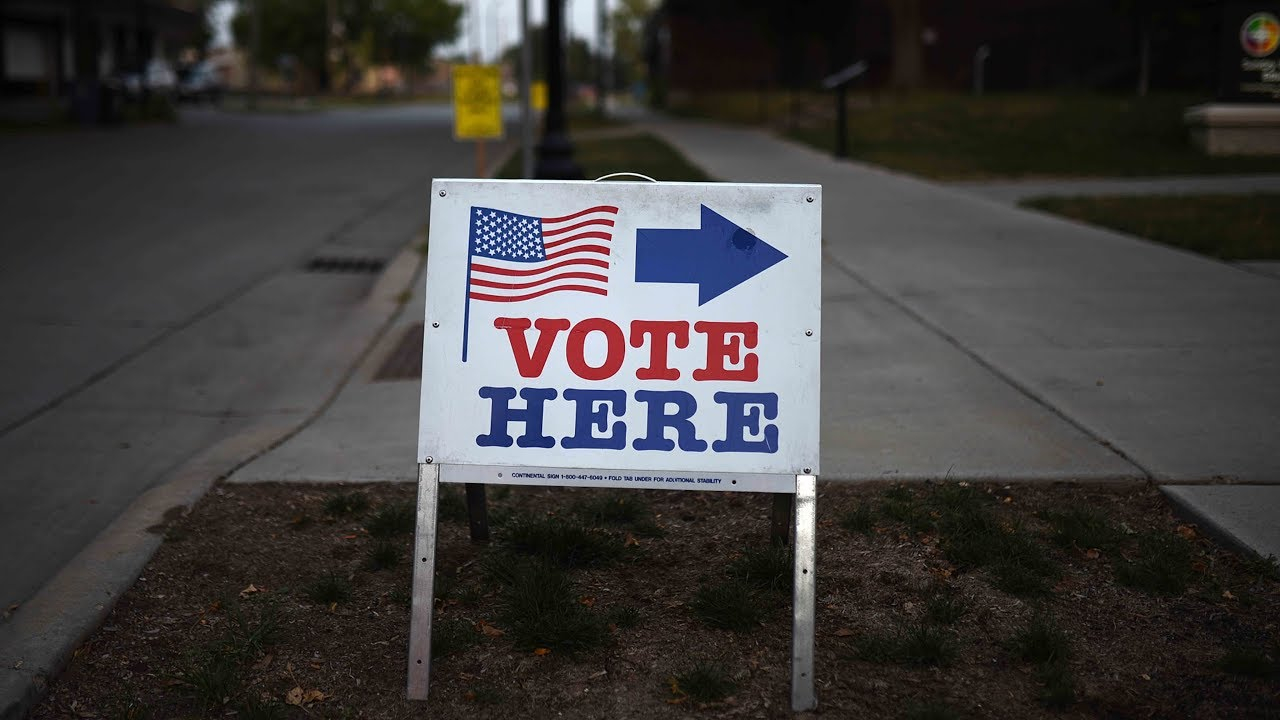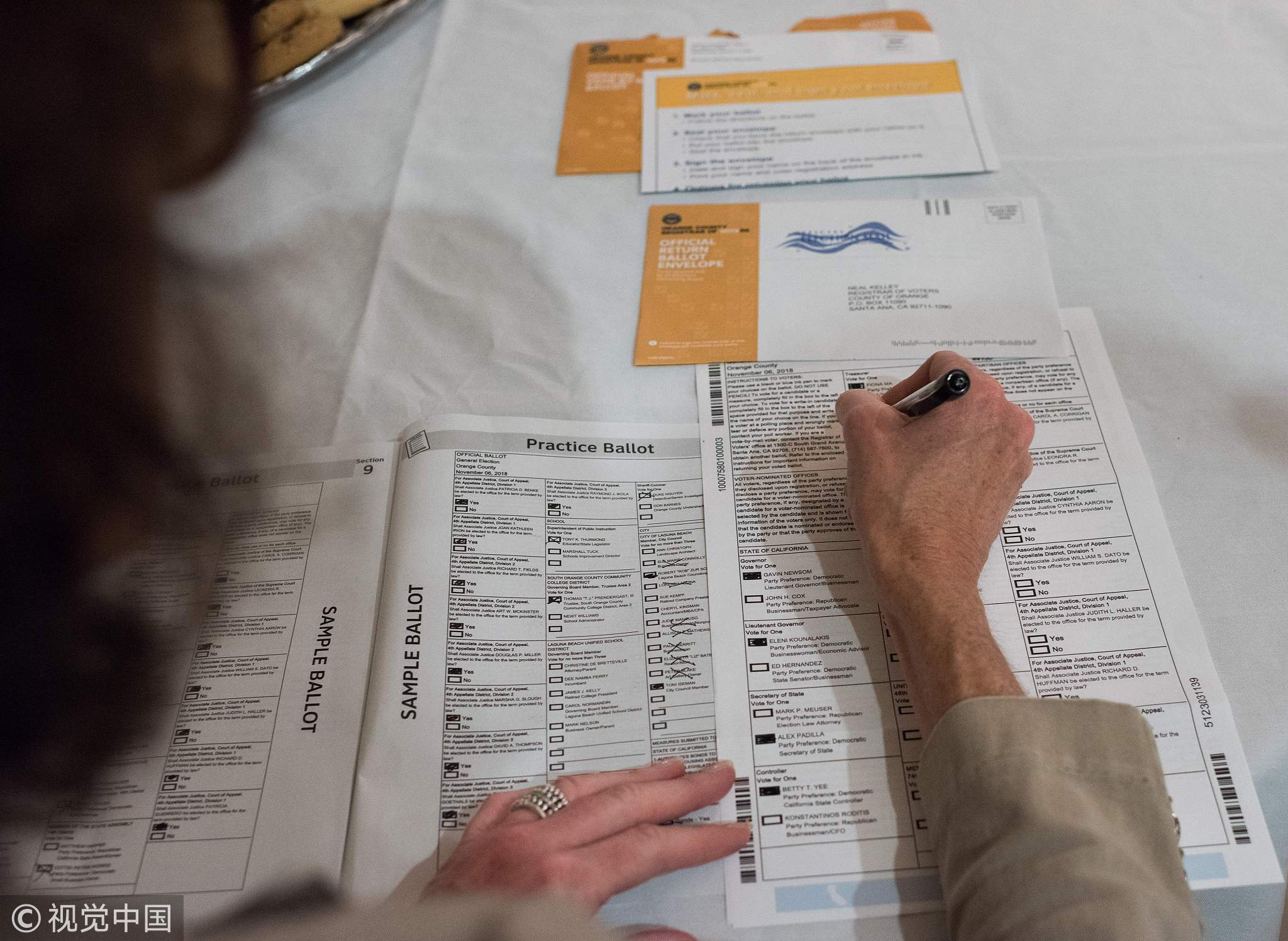
Politics
10:51, 31-Oct-2018
US midterm elections: What are they? What to expect?
Updated
10:52, 03-Nov-2018
By Yasmeen Sami Alamiri
01:36

The United States holds midterm elections every four years. Because they are held in the middle of a president's term, midterms are often viewed as a referendum on the sitting administration's politics and policies.
Historically, this has been bad for the party that holds the White House.
In elections going back to 1862, there were only four years where the party in power gained seats in the House of Representatives, and 15 years where the party in power gained or held their seats in the Senate.
At stake in these midterms are all 435 seats in the House of Representatives, one-third of seats in the Senate, and several state and local positions.

An "I Voted" sticker included in a mail-in ballot package is seen at a Ballot Party at a private residence, in Orange County California, US, October 24, 2018. /VCG Photo
An "I Voted" sticker included in a mail-in ballot package is seen at a Ballot Party at a private residence, in Orange County California, US, October 24, 2018. /VCG Photo
If Democrats win control of the House and Senate in the midterms, they could slow or stop the repeal of Obama-era health care programs, slow some of President Donald Trump's immigration policies, slow or reverse Trump's push against environmental regulations, and push for social programs that have come under threat by Trump's White House.
One US phenomenon that affects all elections is gerrymandering, which is how state officials have been able to draw boundaries for voting districts in order to give one political party an advantage.
Every decade after the US Census is performed, communities will redraw their voting districts based on changes in the population. This act of redistricting is often where gerrymandering takes place.
Often districts are redrawn in such a way that it doesn't fairly represent the party affiliations of a particular district.

Voter Becky Visconti completes her mail-in ballot at a Ballot Party at a private residence, in Orange County California, US, October 24, 2018. /VCG Photo
Voter Becky Visconti completes her mail-in ballot at a Ballot Party at a private residence, in Orange County California, US, October 24, 2018. /VCG Photo
In fact, the origins of the word gerrymandering come from Massachusetts Governor Elbridge Gerry, who in 1812 created a district to favor his party that his critics said resembled a salamander.
Despite these concerns, the 2018 midterms are already ushering in change.
There are a record number of women running for office with 23 women on ballots for the US Senate, and 237 running for the US House of Representatives, according to the Center for American Women and Politics at Rutgers University.

SITEMAP
Copyright © 2018 CGTN. Beijing ICP prepared NO.16065310-3
Copyright © 2018 CGTN. Beijing ICP prepared NO.16065310-3